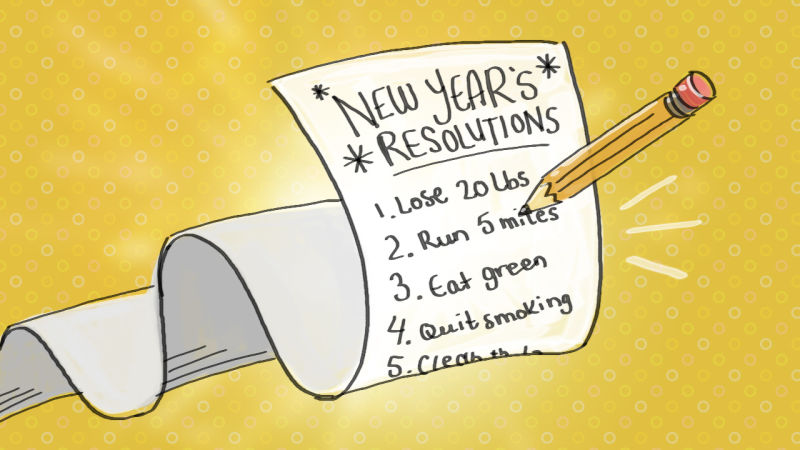
Get Out of Your Comfort Zone to Keep Your New Year’s Resolution
Janet Southward, Nerium International
January is the quintessential time to improve health, break old habits and recommit to achieving goals. January first always recharges me. I’m extra fired up when I know change is within my grasp. Excitement and passion feel amazing! However, these emotions generate enthusiasm, but lack the muscle to implement lasting change. I’ve achieved great results spurred on by New Year Resolutions. I’ve also failed miserably and quit resolutions. So, what’s the key to sticking to resolutions for long term change?
 I’ll state the obvious first; we are the key to our success; but just showing up isn’t enough to keep New Year’s Resolutions. Our tendency to stay within our comfort zone is often the facilitator of the bad habits we want to break. To overcome our bad habits and replace them with new resolutions, we need to be clear about what we want to do. We also need a system to measure our progress. For example, saying you want to lose weight is not a realistic goal. Identifying a target weigh is a realistic goal. To tackle a new goal, including weight loss, you have to know your starting point. In the case of weight loss, what is your current weight? When you know what you want to achieve, and understand where you are in relation to your goal, you can devise a plan for success.
I’ll state the obvious first; we are the key to our success; but just showing up isn’t enough to keep New Year’s Resolutions. Our tendency to stay within our comfort zone is often the facilitator of the bad habits we want to break. To overcome our bad habits and replace them with new resolutions, we need to be clear about what we want to do. We also need a system to measure our progress. For example, saying you want to lose weight is not a realistic goal. Identifying a target weigh is a realistic goal. To tackle a new goal, including weight loss, you have to know your starting point. In the case of weight loss, what is your current weight? When you know what you want to achieve, and understand where you are in relation to your goal, you can devise a plan for success.
Once your resolution is clear and you have a plan, long term success needs two more ingredients. They are a positive mindset, the way you think, and how well you do the work to reach your goal. Your success is dependent on doing the right activities, consistently, over an extended period of time with a good attitude. These two factors determine how fast you reach your goal, and if the goal becomes permanent change.
David Byrd, bestselling author and achievement consultant, says, “Your untapped potential lies just beyond your comfort zone!” The only way to move beyond your comfort zone to achieve your dreams is the right mindset and consistent, planned activities that drive you to success. I quit smoking successfully over 30 years ago using these principles. At the time, I didn’t know I was following this success process. I just planned for every obstacle I could think of because I wanted to quit smoking. Now, I know if I want success, I follow this model and I will achieve my goals.
Here are the steps I used to quit smoking. I smoked for 10 years, and I was tired of it. I didn’t like the way I felt, and it was important to me to be in good health when I got pregnant. I incorporated my desire to be healthy into a systematic approach to quit smoking. I was determined to be finished, and I planned and stuck to the plan until I succeeded.
1) I Set a Date to Quit. I planned for it, and when the clock struck midnight on New Year’s Eve, I handed my cigarettes and lighter to a friend. My friend was expecting me to hand my cigarettes to her and that was key to my first step to quit smoking.
2) I planned new activities to replace times I would typically smoke. I started doing cross-stitch after lunch to distract me from smoking. I continued eating with my friends, but when I normally picked up a cigarette I had my cross-stitch ready. I didn’t change my lunch plans, but I planned something new to take the place of smoking. I Knew I needed more than willpower; I needed to create a new habit to displace my desire to smoke.
3) I planned positive self-talk to encourage myself when I was tempted to smoke. I didn’t allow negative chatter to start in my head. As soon as I thought about smoking, I would tell myself how bad I smelled when I smoked. I would remind myself how much I loved my perfume and it smelled much better then cigarettes. I would remind myself how bad I felt getting bronchitis. I would tell myself how much better I feel not smoking. I had a list of reasons not to smoke and I would repeat the reasons and the benefits of not smoking until the urge left me.
4) I rewarded my commitment to not buy cigarettes. One of my motivations to stop smoking was the cost of smoking. I literally told myself I was burning money every time I smoked. To keep the vision real, I saved the money in a jar I’d normally spend on a carton of cigarettes. Seeing the dollars add up weekly was a huge incentive to stick to my plan. I took the visualization further by refocusing on what I gained. When I wanted something I couldn’t afford in the past, I used the cigarette money to purchase it.
5) I used the biggest reason I wanted to quit (My Why) to keep me motivated. My biggest desire to quit smoking was to be smoke-free when I became pregnant. I leveraged my personal health goals, especially pregnancy to quit. Having preplanned scripts to tell myself was a big reason I was not defeated by the head game that takes place when we are trying something new.
6) I changed some of my relationships. If someone was not supportive; or tried to sabotage my success, or was negative, I walked away from the relationship and found new friends interested in being healthy. No matter how old we are, our associations affect us. I looked for people who lived and had healthy habits.
7) I saw myself as a nonsmoker before I quit. I quit smoking in my mind before I ever put down my final pack of cigarettes. How we see ourselves is so important. If I waited until I hadn’t had a cigarette for 24 hours to think about being a nonsmoker, I probably wouldn’t have quit. If I saw myself as a smoker when I was trying to quit, my mindset would be working against me. Seeing myself as a nonsmoker, healthy, happy pulled me to my goal. If I kept seeing myself as a smoker or as an ex-smoker, it would have kept me stuck and far away from my goal. Choosing the direction I wanted to go was key to quitting smoking and becoming a healthy person. I followed my plan for over a year until I had absolutely no desire for a cigarette. Four years after I quit smoking, I gave birth to my first son.
